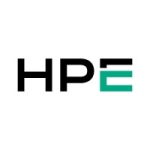What is our primary use case?
Block Storage can be used for storing files of varying formats. It can be used as an object storage as well, so people can dump a variety of files into it. It's called a storage account, actually. This storage account can be used to store any application-specific files and there could be different Azure services which can consume the files, like that storage account, as part of the architecture. There could be an application storing the data, and there could be some other service that picks those files up from there. This solution is part of that entire architecture. It's kind of similar to a history you have in a website. It is almost exactly the same as that.
What is most valuable?
It has capabilities such as versioning and, from a security point of view, you can also back it up. It has resiliency features as well.
You can have GRS, like a during and end storage feature, enabled so that it can be replicated to a secondary region in Azure. This can prevent an outage in the primary region.
What needs improvement?
There is a drawback or limitation to the GRS storage feature because depending on the amount of data, it could take a lot of time. There are a lot of steps from the application perspective, so it's not easy and straightforward from a business continuity perspective. That is one of the limitations I see in the solution.
It's about the time it takes to revert back. The failover takes a couple of minutes but then it takes a lot of time to fail it back to the primary region again, so you have to do a synchronization again. That's a bit of a challenge because if it contains a lot of data in terabytes, the cost to do a replication again but reverse the direction from secondary to primary is a bit extra. Obviously, though, this only happens when there is an out, when a DR is involved, so it's not very often that companies would come across this. It's only in the worst case scenario.
It's not a big thing, but some companies have limited time for their DR, like there's a RPO, or a recovery point objective and recovery time objective, that is very short. In that case, this product may not be suitable or may not meet their customer's requirements. That is something that Microsoft should focus on, to bring the time down or make that process, the DR process, a bit easier for this product. Maybe as they continually improve this product they can add improvements in this aspect to reduce that DR time, recovery time, for the solution.
For how long have I used the solution?
I have been working with this product for about four or five years.
What do I think about the stability of the solution?
I have seen this solution be pretty stable. I've never had an issue with it. I'd rate the stability as a five out of five.
What do I think about the scalability of the solution?
It's very scalable. It has really high limits, so I don't think most customers will hit that limit. I'll give it a five out of five for scalability.
Big enterprises as well as medium enterprises use this solution, and even smaller enterprises. There are organizations with 100 users, 1000, and even some with 5000 and above. There could be only applications consuming this, or end users also, but the end users directly connecting to the solution are a lot less.
It's mostly the developers who configure the application to use this solution as the object storage. Eventually, the end users of the application could be in the 1000s, and they utilize this back end solution via the application, so it is getting utilized by the end users, but it's via the application.
How are customer service and support?
There was one issue I had with the backup. I didn't get a proper response and it took a couple of days for the response. It turned out to be a restriction and limitation, so it didn't get solved, but I was told that it was a limitation. I would rate the technical support as a three out of five.
How was the initial setup?
The solution can be deployed manually from the Azure portal, or it can be done programmatically, via code. The setup is very easy and straightforward. It only takes a few minutes. I rate it a five out of five.
What about the implementation team?
I have deployed this solution for customers, and just one person is required for deployment. Anybody who has knowledge of Azure and has some administrative experience in Azure can do this. It's a very straightforward solution to deploy.
There is hardly any configuration in this solution, so it's maybe a day's task to deploy, but not beyond that. Once the design for this product is confirmed and completed, then the deployment is just following those design inputs which have been already signed off on by the customer. Customer requirements and specific features that need to be enabled in this tool need to be finalized first, which happens in the design phase. Once all of that is finalized, deploying it with the agreed configuration can be done in a day, max.
What was our ROI?
It's fairly cheap and it's also fully managed by Microsoft, so you don't have to manage the storage as much.
What's my experience with pricing, setup cost, and licensing?
The solution is pay as you go, so it depends on the amount of data that is stored and the transactions. There's no licensing requirements. Also, we can have a subscription, like reservations for the storage. If we have a lot of data, then that can help reduce the cost, at least to some extent. The technical support is part of the support plan.
The price depends on each customer. If they use a lot of data, the cost can be very high. I think it would be the same case with other tools as well, though, so it is quite affordable.
What other advice do I have?
The solution has life-cycle management, versioning, and a lot of protection features like sub-delete and all of that. It's pretty much complete, so it satisfies most of my customers' needs and requirements. I recommend this product because it is straightforward and well-documented.
I would rate the solution as an eight out of ten.
Disclosure: My company has a business relationship with this vendor other than being a customer. Gold Partners














